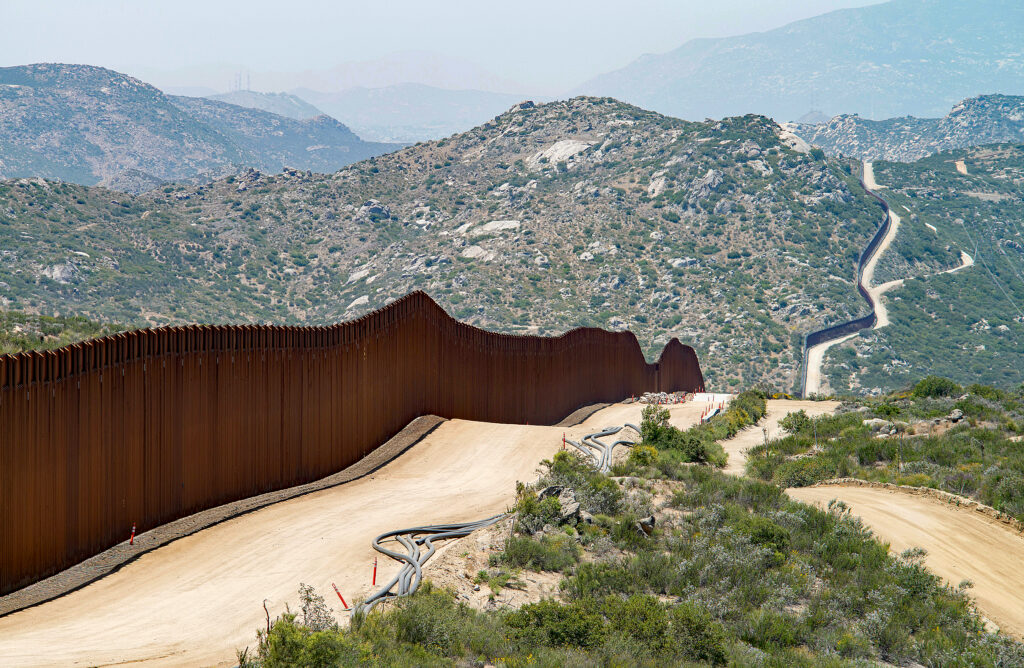Memories and Musings: On Walls and Fences

Alexandria, VA – Walls and Fences. Their purpose is to hold some things in and keep some out.
Good or bad? Yes, I think, both good and bad.
There are walls and fences in and around all kinds of buildings and spaces – homes, businesses, schools, parks — and prisons. Around countries. I’m thinking of the Great Wall of China.
Last month, I revealed that one of the things I like about writing this column is that it inspires me to research things I don’t know about. It’s true. I’m not one of the 50 million annual visitors who, according to Travel China Guide, visit the 13,171-mile wall annually. I’ve just learned that some 37 years ago, in 1987, the Great Wall was listed as a World Heritage Site (travelandleisure.com).
According to Wikipedia, “The Great Wall of China is a series of fortifications built across the historical northern borders of ancient Chinese states and Imperial China as protection against various nomadic groups from the Eurasian Steppe.”
Travel China Guide says that it didn’t always succeed.
“For thousands of years, the Great Wall, to some extent, acted like both a physical and mental barrier between the central Chinese Empire and the barbarian northern nomads, but this only worked for the underdog. Several strong nomadic tribes in history had managed passage across the barrier. For instance, in the 13th century, the Mongols led by Genghis Khan breached the wall and subjugated north and central China for nearly 100 years; in 1644, the Manchus entering from Shanhaiguan resulted in the collapse of the Ming Dynasty.”
Closer to home is the U.S.-Mexico Border Wall.
In some places in the west, there is high double fencing. In others, there no fencing, The Rio Grande and the rugged terrain around the river serve as a natural barrier.
Do border walls work? According to the Migration Policy Institute’s “Borders and Walls: Do Barriers Deter Unauthorized Migration?” (Reece Jones, October 5, 2016) fortified walls did not prevent crossings into the United States entirely but instead shifted flows to other locations that were more remote and dangerous leading to more deaths. Note this headline in USA Today, Aug. 3, 2023: Two found dead in Rio Grande where Texas’ floating barrier and razor wire sparked federal lawsuit.
Still, millions of people globally continue to cross borders without authorization—meaning walls are relatively ineffective. They are however effective as symbols that demonstrate that politicians are doing something to address the perceived threats brought by unauthorized movement. The perceived threats can be economic in the form of lost revenue and jobs and they can be cultural in that migrants bring different languages and traditions.
An example of border fencing close to me is the Critter Guards I had installed around my solar panels. They keep squirrels from gnawing the wiring, but falling leaves slip between the panels and can’t get out, possibly causing damage to the roof. Good and bad.

Yet another example is the view of the inside of apartment buildings, which can be seen when buildings are demolished either intentionally or by disaster. There’s a story behind each wall that most of us never see or think about until the walls come down. Again, good and bad.
Fences and walls provide privacy and at least a sense of security. Good or bad? Yes, good and bad. What do they keep out? What do they hold in?
In closing, I offer these lines from a Unitarian hymn,
“… though these sheltering walls are thin,
may they be strong to keep hate out
and hold love in.”
Author: Louis Untermeyer. Source: Singing the Living Tradition, Hymn #1
Mosaic artist/photographer is the founder of Living Legends of Alexandria.
ICYMI: For Third Consecutive Year, Alexandria Makes Travel + Leisure’s Best Cities List



